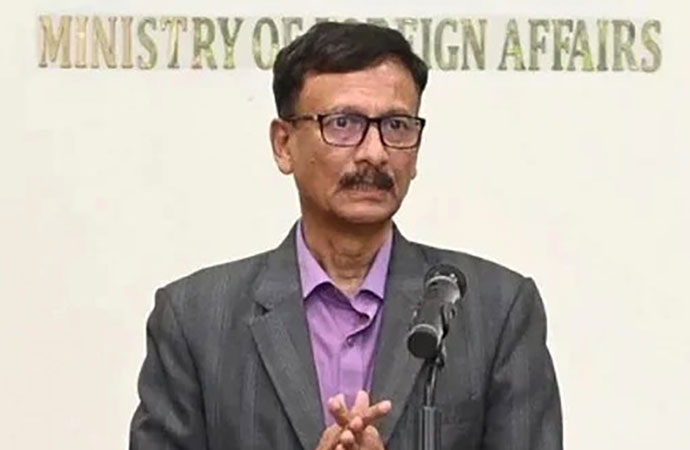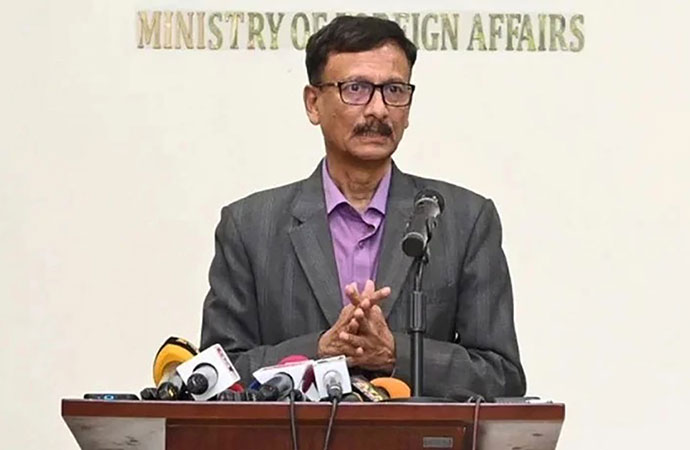Reportage

The Awami League government's most visible and perhaps most important achievement, at least over the first two terms it governed after cantering to power in 2009, would have to be the turnaround it was able to bring in the energy and power sector. Prime Minister Sheikh Hasina is not far wrong when she advises 'a bit of loadshedding so as not to forget'. Her government's success has meant many have indeed forgotten the dire situation in the power sector when they took office, and there is a generation now that in fact never witnessed it.
The seasoned politician in the prime minister realises the massive advantage that accrues to her party from its association with a new Bangladesh, that is more troubled these days by having to manage its overcapacity in the power sector. At the same time, it allows for room to paint her chief political rivals, the BNP, as incompetent.
While some of the measures then AL government and its allies relied on, such as the Speedy Supply of Power and Energy (Special Provisions) Act, can rightly invite scrutiny in democratic societies, especially the need for an indemnity proviso attached to it, no one can deny the country at the time was quite ready to take emergency measures to address the situation, where even affluent parts of the capital had to witness upto 12 hours of loadshedding. Now though, such provisions are no longer warranted, and the rental power plants (barge-based, diesel-generated power that were meant to act as stop-gaps) are being phased-out.
The power sector plays a crucial, indeed indispensable role in the socioeconomic development of a country, if it is to ensure economic growth and gain energy security. The Awami League government has a vision to achieve total generation capacity of 40,000 MW by 2030 and 60,000 MW by 2041 (when it envisions Bangladesh as a developed nation).
Under a fuel diversification program, gas-based generation capacity has been reduced to 44% from 88%, while the share of other fuels like coal, liquid fuel and renewable has been increased significantly. This also reflects the country's own dwindling natural gas reserves. At its peak, Petrobangla, the state hydrocarbons agency responsible for gas supply, could provide 1,000 mmcfd of gas to the power plants from its total supply of 3,500 mmcfd. But at present, Petrobangla's total supply is 2,500 mmcfd, of which gas-fired power stations are getting 700 mmcfd.
Along with efforts from the public sector, collaboration between private and public-private companies has ensured financing of $33 billion in the power sector in the last 14 years - a vital part of why the government stresses it is important to keep the private sector players on board through incentives like the capacity charge.
At present, 29 power generation projects of capacity 10,881 MW are under construction, out of which BPDB is directly implementing 5 projects of capacity 730 MW and 17 projects of capacity 4,230 MW through are by the IPPs. The plan envisages around 20,416 MW new generation addition from July 2023 to December 2027, out of which 728 MW capacity has already been added.
In the 2022-23 fiscal, BPDB sold bulk energy of 84,450 GWh to the distribution utilities including BPDB's own distribution zones, as the single buyer - 3.48% higher than the previous year. Retail sales of BPDB's four distribution zones was 12,070 GWh, which was 1.02% less than the previous year.
Distribution system loss without 230 and 132 kV consumers of BPDB came down to 7.92 percent from 8.1 percent of previous year and with 230 and 132 kV consumers of BPDB Distribution system loss became 6.4 percent.
A new headache: Overcapacity
The 29 power generation projects, having a combined capacity of 10,881 MW are now under construction, even as the country struggles to manage the costs of overcapacity to the tune of 40 percent prevailing in the power sector. It is certainly a long way though, from the days when it struggled with 50 percent or more under-capacity, and the amount of loadshedding that entailed.
The recently published "Annual Report 2022-23" of the Bangladesh Power Development Board (BPDB) contains information on the under-construction 29 power generation projects.
It said, "Diversified fuel-based power generation expansion plans are adopted to meet the ever growing electricity demand in Bangladesh. As a part of these plans, 29 power generation projects of capacity 10,881 MW are now under construction, out of which, BPDB is directly implementing 5 projects of capacity 730 MW and 17 projects of capacity 4,230 MW through the IPP sector."
The annual report further said, "The plan envisages around 20,416 MW new generation addition from July 2023 to December 2027, out of which 728 MW capacity has already been added up to September 2023."
Many experts in the power and energy sector however, point out that keeping the 40 percent overcapacity in mind, adding another 10,881 MW to the national grid in the next three years will further increase the burden of capacity payments, which are written into contracts with independent power producers (IPP), as the private sector players owning power plants are referred to.
Of the total 29 projects, 5 are in the public sector while17 are in the private sector, the annual report said. The ownership structure of the remaining 7 is not clear, with some hybrid combination or joint venture possible.
According to available data, the country's overall power generation, combining grid capacity and off-grid (mainly captive) power, increased by about 5000MW in 2023 to reach a new benchmark of 30,700MW, although with demand failing to keep up, this is expected to lead to higher capacity payments for the government.
This is disclosed in available data from the state-owned BPDB, Bangladesh Energy Regulatory Commission (BERC) and Sustainable and Renewable Energy Development Authority (Sreda).
The BPDB data shows that of the 5000MW new power generation, some 3,343MW was added to the national grid by the import electricity from India and production from newly set up local power plants while about 1400MW came from off-grid captive and off-grid solar power.
It also shows that the country's installed grid-connected power generation capacity has reached to 25,951 MW on December 30 in 2023 from 22,608 MW in 2022 showing a capacity enhancement of 3343 MW.
Beyond the national grid, as per BERC data, the captive power generation has increased by 1379MW to reach 4760 MW in 2023 from 3,381MW in 2022.
The captive power plants were mainly set up by industries for their own consumption to get uninterrupted power supply as the grid power does not guarantee uninterrupted supply.
Sources in the power sector said that despite more than 40 percent surplus power generation in the country, still many industries prefer to use their captive power for uninterrupted supply.
Together the new off-grid captive power and grid-connected power has pushed up the country's total power generation capacity to 30,711 MW in 2023 from about 25,700 MW at the end of 2022.
The officials said the import of 1600 MW from India's Adani Group and setting up of a number of coal-based new power plants played a vital role in increasing power generation by 5000 MW in a single year.
Although this increased power generation capacity is a pleasing development on the face of it, especially given the country's long history of struggle with power shortages, BPDB officials are also quick to point out that the growing surplus capacity would also lead to a rise in capacity payments, whereby IPPs get paid even for the electricity the government doesn't need from them.
They said that the new power plants being added to the grid were set up by the IPPs, or independent power producers (the private sector firms investing in the power sector, by building and often operating the plants), and the BPDB has an obligation to purchase power from them - to not let their investment go to waste or end in loss. Having them exit the power sector due to losses would be a bigger blow to BPDB's long-term vision.
The increasing burden of capacity payments may pinch the government, as well as the consumer, harder if the dollar crisis prevailing in the country persists.
According to the Centre for Policy Dialogue, a Dhaka-based think tank, capacity payments to private, rental, and quick rental power plants have increased from Tk 5,376 crores in FY2017 to as high as an estimated Tk 28,000 crores in FY 2023.
In 2024, surplus electricity generation capacity is projected to rise to 50 percent from the existing 40 percent, as the country's peak hour demand is about 16,000 MW, according to a top BPDB official. It would mean even at peak demand, half the plants would be surplus to requirements, and thus lie idle.
Official sources recently said that the power and energy sectors of Bangladesh have been hit by severe cash crunch, especially the US dollars, piling up a huge backlog in payment of their import bills.
According to official sources, the sectors' cumulative outstanding bills have now jumped to about $5 billion of which the backlog amount in the power sector is about $4 billion (about Tk 43,093 crore), and the remaining 1 billion is in the energy sector.
State Minister for Power, Energy and Mineral Resources Nasrul Hamid also admitted the severity of the crisis.
"Actually the crisis is not of local currency. Somehow we can manage it. But the main crisis is of dollar. We're not getting dollars from Bangladesh Bank as per our needs," he told our sister newsagency UNB in an interview, shortly after AL secured reelection for a fourth consecutive term.
In its three previous terms, the Awami League-led government has paid at least Tk 1.04 lakh crore to 82 independent power producers (IPPs) and 32 rental power plants as capacity charge and rental payments, Nasrul Hamid, the state minister for power, energy and mineral resources, told the parliament on September 5 last year. The amount is equivalent to one-sixth of the country's annual budget.
Will demand keep up?
The highest electricity generation peak reached a record of 15,648 MW on 19 April 2023, an increase of nearly 6 percent over the previous year's peak. This surge in peak generation reflects a substantial growth within a year, showcasing progress and improved capacity in the power sector.
Electricity demand in the system fluctuates throughout the day and night. The highest demand is observed during 5pm to 11pm, known as the 'peak hours,' while the rest of the time is categorised as the 'off-peak hour.' The degree of this fluctuation is quantified using the Load Factor, defined as the ratio of average demand to the maximum demand.
Maintaining a higher Load Factor is economically beneficial as it allows for more efficient use of plant capacity. Therefore, consistent load management is crucial year-round to optimise power plant capacity utilisation and minimise generation costs. Load management involves efforts to reduce or minimise certain electricity-consuming activities during peak hours. Shifting these activities from high-demand to low-demand periods through specific mechanisms is the essence of load management. In terms of load management:
A two-part tariff system has been introduced for 3-phase consumers (both low tension and high tension), where the price during peak hours is significantly higher than off-peak hours. This pricing structure incentivizes consumers to reduce usage during peak times.
Holiday staggering is implemented to coordinate closures of industries, markets, and shopping malls based on specified holidays for different areas. This approach helps distribute demand more evenly.
Consumers are motivated to adopt energy-efficient practices, such as using energy-efficient bulbs, electric appliances, pumps, etc., to reduce overall energy consumption.
Consumers are encouraged to set their air-conditioner's temperature at 25 degrees Celsius, promoting energy conservation and reducing peak demand.
BPDB has also adopted Demand-side management (DSM), modifying energy use to maximise energy efficiency. DSM involves changing energy use habits of consumers and encouraging them for using energy efficient appliances, equipment etc. at their premises.
To shift irrigation load from peak hour to off peak hour, BPDB has started campaigns through electronic and print media. In the last few years, it is estimated that about 500 MW irrigation load was shifted from peak hour to off peak hour. BPDB also has Load Management Committees in every distribution zone/circle/division to monitor the proper load distribution during irrigation.
BPDB has taken motivational programs to enhance awareness of the consumers during peak hours. Consumers are being urged through electronic and print media to be rational and economical in electricity use during peak hour by switching off unnecessary loads like extra lighting, ironing, pumps, air conditioners, welding machines etc.
As part of the demand side management program, BPDB has taken steps to use CFL in BPDB's offices and also taken measures to motivate consumers to use energy efficient lamps. Apart from that, industries operating in two shifts are being requested not to operate during peak hours.
The premium on primary fuel
In hindsight, most experts agree that the very sudden and unexpected wake-up call on the Bangladeshi economy, that the public received in the very first week of the 2022-23 fiscal, i.e. July 2022, was caused by an increased dependence on imported LNG as a primary fuel for power generation - in particular the occasional (but not infrequent) purchases from the spot market. It came as an almost completely new item on the country's balance sheet, but the government did show good sense in not waiting to apply for an IMF loan. Once approved, that could help it gather its bearing in the new, transformed context it found itself in with regards to fuel supplies.
It proved to be a bit of a baptism by fire, as the Russia-Ukraine war had thrown energy markets topsy-turvy already. It even forced Bangladesh to exit the market for a period, as the LNG price hit $70 per MMbtu at one stage. Today though, it is once again back on the spot market at a lower price as prices on the international market are on the decline (they have been for a while).
Last week, the cabinet committee on government purchase approved the latest cargo, a consignment of 3.36 MMbtu, at a rate of $9.93 per MMbtu yesterday. It will be supplied by the Singapore-based company Vitol Asia Pte Ltd.
Earlier on January 23, the government had approved another cargo 3.36 MMbtu at a rate of $10.88 per MMbtu, from Switzerland-based TotalEnergies Gas and Power Ltd.
Bangladesh's power generation is sourced from a diverse range of fuels. Bangladesh's power generation is predominantly fueled by gas, making a significant share with 11,372MW (45.65%). Furnace oil follows with 6,492MW (26.06%), coal provides 2,692MW (10.81%), and power imports contribute 2,656 MW (10.66%). Diesel adds 1,010 MW (4.05%), Hydro contributes 230 MW (0.92%), and solar PV systems contribute 459 MW (1.84%).
Total net energy generation in FY 2022-23 was 88,450 MkWh, which was about 3.32% higher than previous year's net generation of 85,607 MkWh. In the public sector, there was a net energy generation of 34,698 MkWh, and BPDB's own power plants contributed 17,433 MkWh to this total.
Gas contributes the most to net energy generation, contributing significantly with 46,013 MkWh or 52.02% of the total energy output. Furnace oil comes in second place, making up 20.71% of the total with a contribution of 18,323 MkWh. Coal also represents a significant portion, generating 10,081 MkWh, or 11.40% of the total energy. Import stands at 10,425 MkWh, making up 11.79% of the total energy generated.
Sadly however, the country looks like it has entered a phase of import-dependency for primary fuels, and this will always be costly in the long run. Energy experts continue to lament the failure to explore more for its own resources. Vast stretches of ocean falling under Bangladesh's Exclusive Economic Zone remain unexplored, nearly 10 years after resolution by a UN court.
A multi-client seismic survey, crucial for attracting the big oil majors (or International Oil Companies, IOCs), still seems to elude the government, while talks with ExxonMobil, floated last year alongside an amended, more attractive Production Sharing Contract, seem not to have stalled - more like erased from memory. Sleepwalking deeper and deeper into import dependency is a danger the energy and power sector must never lose sight of. For what it's worth, stakeholders like the media must play a role too, in not allowing it to happen.

























Leave a Comment
Recent Posts
Remembering Kalidas Karmakar ( ...
The art world remembers Kalidas Karmakar, a visionary whose creativity ...
An Evening with Shishir Bhatta ...
Cosmos Art Echo, the artist talk initiative of Gallery Cosmos and Cosm ...
Myanmar denies genocide, calls Rohingya crackdown co ..
Yes, of course
Earth’s average temperature last year hovered among ..
Bangladesh and Singapore: A Tale of Two Nations